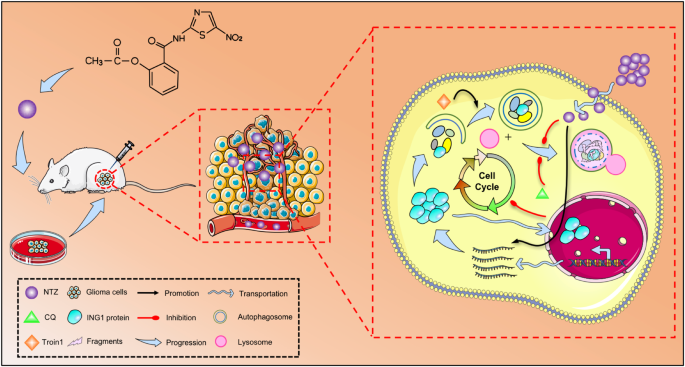How does Nitazoxanide work in treating parasitic infections?
Nitazoxanide Powder is a broad-spectrum antiparasitic agent that works by interfering with the energy metabolism of parasites. It targets the pyruvate-ferredoxin oxidoreductase (PFOR) enzyme system, which is essential for anaerobic energy metabolism in many parasites. By inhibiting this system, Nitazoxanide effectively starves the parasites of energy, leading to their death.

The medication is particularly effective against a wide range of protozoa and helminths, including:
- Giardia lamblia
- Cryptosporidium parvum
- Entamoeba histolytica
- Various helminth species
In addition to its antiparasitic properties, Nitazoxanide has also shown activity against certain bacteria and viruses. This broad spectrum of activity makes it a versatile option for treating various gastrointestinal infections in children.
When administered orally, Nitazoxanide is rapidly absorbed in the gastrointestinal tract and metabolized to its active form, tizoxanide. This metabolite is then distributed throughout the body, reaching effective concentrations in the intestinal lumen where most targeted parasites reside.
The unique mechanism of action of Nitazoxanide sets it apart from other antiparasitic medications. Unlike some treatments that may only be effective against specific parasites, Nitazoxanide's broad-spectrum activity allows it to target multiple types of infections simultaneously. This can be particularly beneficial in cases where a child may be suffering from multiple parasitic infections or when the exact cause of the infection is unknown.
Furthermore, the medication's ability to disrupt the energy metabolism of parasites rather than directly killing them may contribute to a lower risk of developing resistance. This is an important consideration in the long-term management of parasitic infections, especially in regions where such infections are endemic.
What factors determine the appropriate Nitazoxanide dosage for children?
Determining the appropriate Nitazoxanide Powder dosage for children involves considering several important factors to ensure both safety and efficacy. Healthcare providers take into account various aspects when prescribing this medication:

- Age and weight of the child: The most crucial factors in determining the dosage are the child's age and weight. Younger children and those with lower body weights typically require lower doses compared to older or heavier children.
- Severity of the infection: The intensity and type of parasitic infection may influence the dosage. More severe infections might require higher doses or longer treatment durations.
- Liver and kidney function: As Nitazoxanide is metabolized in the liver and excreted through the kidneys, any impairment in these organs' function may necessitate dosage adjustments.
- Concurrent medications: The presence of other medications in the child's treatment regimen may affect how Nitazoxanide is metabolized or excreted, potentially requiring dosage modifications.
- Overall health status: Children with compromised immune systems or other health conditions may need carefully adjusted dosages to balance efficacy and potential side effects.
- Formulation of the medication: Nitazoxanide is available in different forms, including powder for oral suspension and tablets. The dosage may vary slightly depending on the formulation used.
It's important to note that while general dosage guidelines exist, the final determination should always be made by a qualified healthcare provider who can assess all these factors in the context of the individual child's needs.
The typical recommended dosage for children is based on their weight:
- For children weighing 12-47 kg (26-103 lbs): 100 mg (5 mL of the oral suspension) every 12 hours for 3 days
- For children weighing ≥48 kg (≥106 lbs): 500 mg (25 mL of the oral suspension) every 12 hours for 3 days
These dosages are generally considered safe and effective for most parasitic infections treatable with Nitazoxanide. However, in some cases, the healthcare provider may adjust the dosage or duration of treatment based on the specific infection or the child's response to the medication.
Parents and caregivers should always follow the prescribed dosage instructions carefully. It's crucial not to exceed the recommended dose or duration of treatment without consulting a healthcare provider, as this could increase the risk of side effects without necessarily improving the medication's efficacy.
Are there any special instructions for administering Nitazoxanide powder to children?
Administering Nitazoxanide powder to children requires careful attention to ensure proper dosing and maximize the medication's effectiveness. Here are some special instructions and considerations for giving Nitazoxanide powder to children:
- Preparation of the oral suspension:
- Nitazoxanide powder for oral suspension typically comes with a bottle of mixing liquid.
- Add the prescribed amount of mixing liquid to the powder in the bottle.
- Shake the bottle vigorously to ensure the powder is fully dissolved and well-mixed.
- Once mixed, the suspension should be a pink color.
- Timing of administration:
- Nitazoxanide should be taken with food to enhance absorption and reduce the likelihood of gastrointestinal side effects.
- Administer the medication at the same times each day to maintain consistent levels in the body.
- Measuring the dose:
- Use the measuring device provided with the medication to ensure accurate dosing.
- Shake the bottle well before each use to ensure the suspension is uniform.
- Measure the prescribed amount carefully to avoid under- or over-dosing.
- Helping children take the medication:
- The suspension has a pink color and a strawberry flavor, which may make it more palatable for children.
- If a child has difficulty swallowing the suspension, consult with a healthcare provider about alternative administration methods.
- Storage and expiration:
- Store the unmixed powder and the mixed suspension at room temperature.
- Once mixed, the suspension is typically good for 7 days. Discard any unused portion after this time.
- Completion of the full course:
- It's crucial to complete the entire prescribed course of treatment, even if symptoms improve before the medication is finished.
- Stopping the medication early may allow some parasites to survive, potentially leading to recurrence of the infection.
- Missed doses:
- If a dose is missed, give it as soon as remembered unless it's almost time for the next dose.
- Never give a double dose to make up for a missed one.
- Monitoring for side effects:
- While Nitazoxanide is generally well-tolerated, parents should watch for any unusual symptoms or side effects.
- Common side effects may include mild abdominal pain, diarrhea, or headache.
- If any severe or persistent side effects occur, contact a healthcare provider immediately.
By following these special instructions, parents and caregivers can help ensure that children receive the full benefit of Nitazoxanide treatment while minimizing the risk of complications or treatment failure. It's always important to consult with a healthcare provider if there are any questions or concerns about administering the medication.
Remember that while Nitazoxanide is effective against many parasitic infections, it's just one part of the treatment approach. Maintaining good hygiene practices, such as regular hand washing and proper food handling, is crucial in preventing reinfection and spreading parasitic infections to others in the household or community.
In conclusion, understanding the recommended dosage of Nitazoxanide powder for children and following proper administration guidelines is crucial for effective treatment of parasitic infections. Always consult with a healthcare provider for personalized advice and dosing instructions based on your child's specific needs and medical history.
If you are also interested in this product and want to know more product details, or want to know about other related products, please feel free to contact sasha_slsbio@aliyun.com.
References
- Centers for Disease Control and Prevention. (2021). Parasites - Nitazoxanide.
- World Health Organization. (2019). Model List of Essential Medicines for Children.
- Fox, L. M., & Saravolatz, L. D. (2005). Nitazoxanide: a new thiazolide antiparasitic agent. Clinical Infectious Diseases, 40(8), 1173-1180.
- Rossignol, J. F. (2014). Nitazoxanide: a first-in-class broad-spectrum antiviral agent. Antiviral Research, 110, 94-103.
- DailyMed. (2021). ALINIA- nitazoxanide powder, for suspension.
- Romark Pharmaceuticals. (2021). Alinia (nitazoxanide) Prescribing Information.
- Bobak, D. A. (2006). Use of nitazoxanide for gastrointestinal tract infections: treatment of protozoan parasitic infection and beyond. Current Infectious Disease Reports, 8(2), 91-95.
- Escobedo, A. A., Almirall, P., Robertson, L. J., Franco, R. M., Hanevik, K., Mørch, K., & Cimerman, S. (2016). Giardiasis: the ever-present threat of a neglected disease. Infectious Disorders-Drug Targets, 16(2), 96-107.
- Stark, D., Barratt, J. L., van Hal, S., Marriott, D., Harkness, J., & Ellis, J. T. (2009). Clinical significance of enteric protozoa in the immunosuppressed human population. Clinical Microbiology Reviews, 22(4), 634-650.
- Rossignol, J. F., Lopez-Chegne, N., Julcamoro, L. M., Carrion, M. E., & Bardin, M. C. (2012). Nitazoxanide for the empiric treatment of pediatric infectious diarrhea. Transactions of the Royal Society of Tropical Medicine and Hygiene, 106(3), 167-173.

